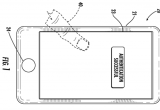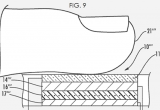Apple facial recognition to secure more products
15 April, 2020
category: Biometrics, Digital ID
Biometrics could get another big mainstream boost as Apple facial recognition is being considered for future versions of iMac and MacBook computers.
That describes at least some of the thought bouncing around in recent weeks after news broke that Apple has filed a U.S. patent application related to deploying facial recognition to a broader part of the company’s product line. According to PatentlyApple.com, the application with the U.S. Patent and Trademark Office “relates to adding Face ID to future iMacs and MacBooks that could replace or supplement their current Touch ID biometric system.”
Apple facial recognition improvements
Many if not most users of iPhones are at least familiar with Apple facial recognition, which launched in 2017 on the iPhone X. According to some reports and observers, the technology was relatively slow — reportedly taking up to five seconds to unlock a mobile device — driving many impatient iPhone users to rely instead on the fingerprint TouchID biometric authentication method. But the Apple facial recognition tool for phones has improved and those lag times are reportedly a thing of the past.
According to Apple’s own figures, facial recognition is much more secure than TouchID
As well, according to Apple’s own figures, facial recognition is more secure than TouchID – the fingerprint method has a one in 50,000 chance of another user unlocking the phone, while facial recognition has a one in a million chance.
Those improvements are a big part of the reason that the prospect of expanding facial recognition to more Apple products seems promising. Still, some challenges remain in terms of making those potential new facial recognition tools as user friendly as possible, at least according to an analysis of the patent applications by PatentlyApple.com.
“For the MacBook the integration of Face ID is awkwardly designed, having some components at the top of the display but having a light pattern recognition module that includes the needed dot projector built into the Touch Bar area in the keyboard,” the report says.
But these recent patent applications could open the door for use of facial recognition in the Apple ecosystem. In turn, that could drive more facial recognition use cases in general among mainstream consumers. As that report notes, “the systems and techniques may also be applicable to capturing face gestures and emotions, video chatting, generating emoji, encrypting data, unlocking the computing device, supplementing passwords, differentiating different users, and the like.”




